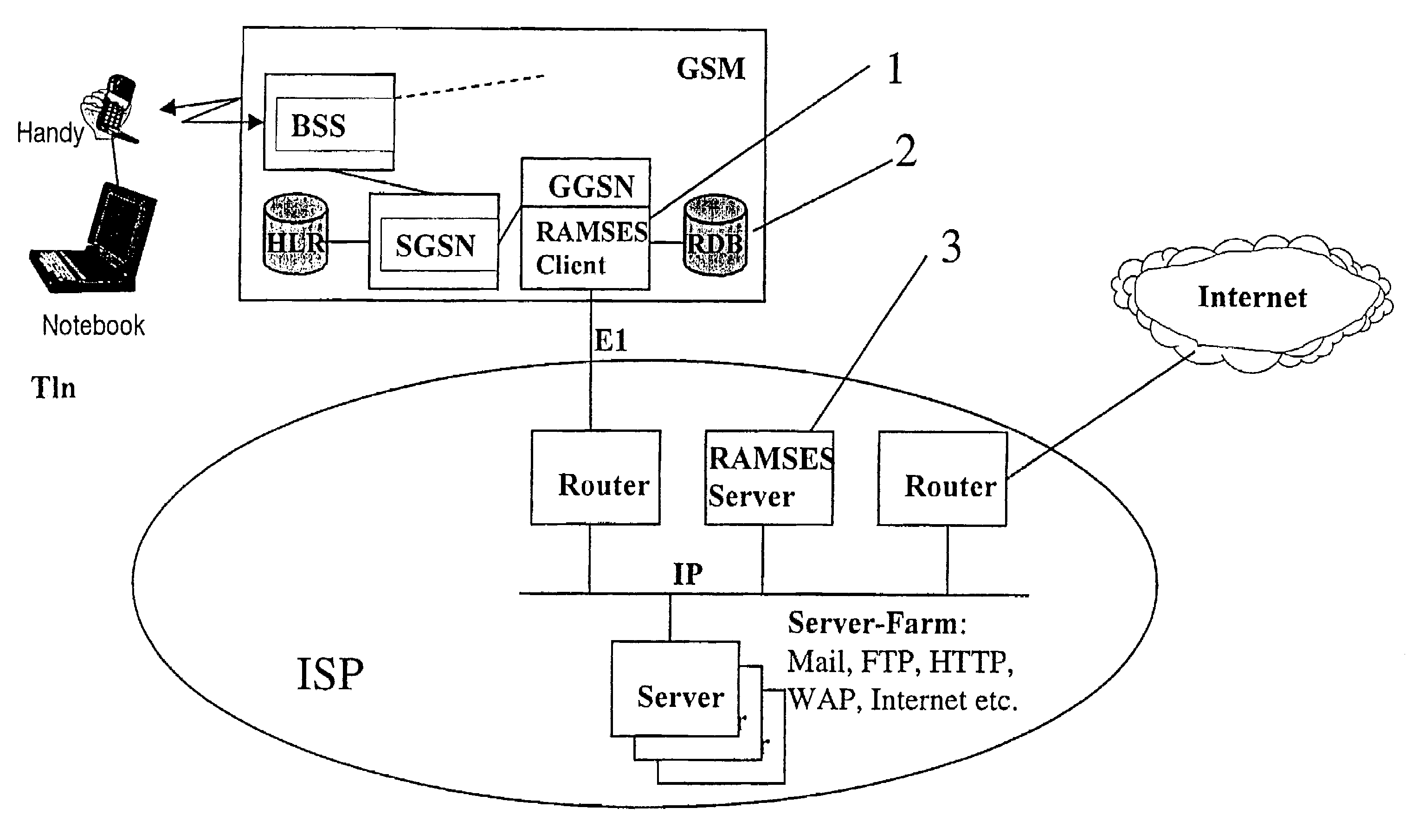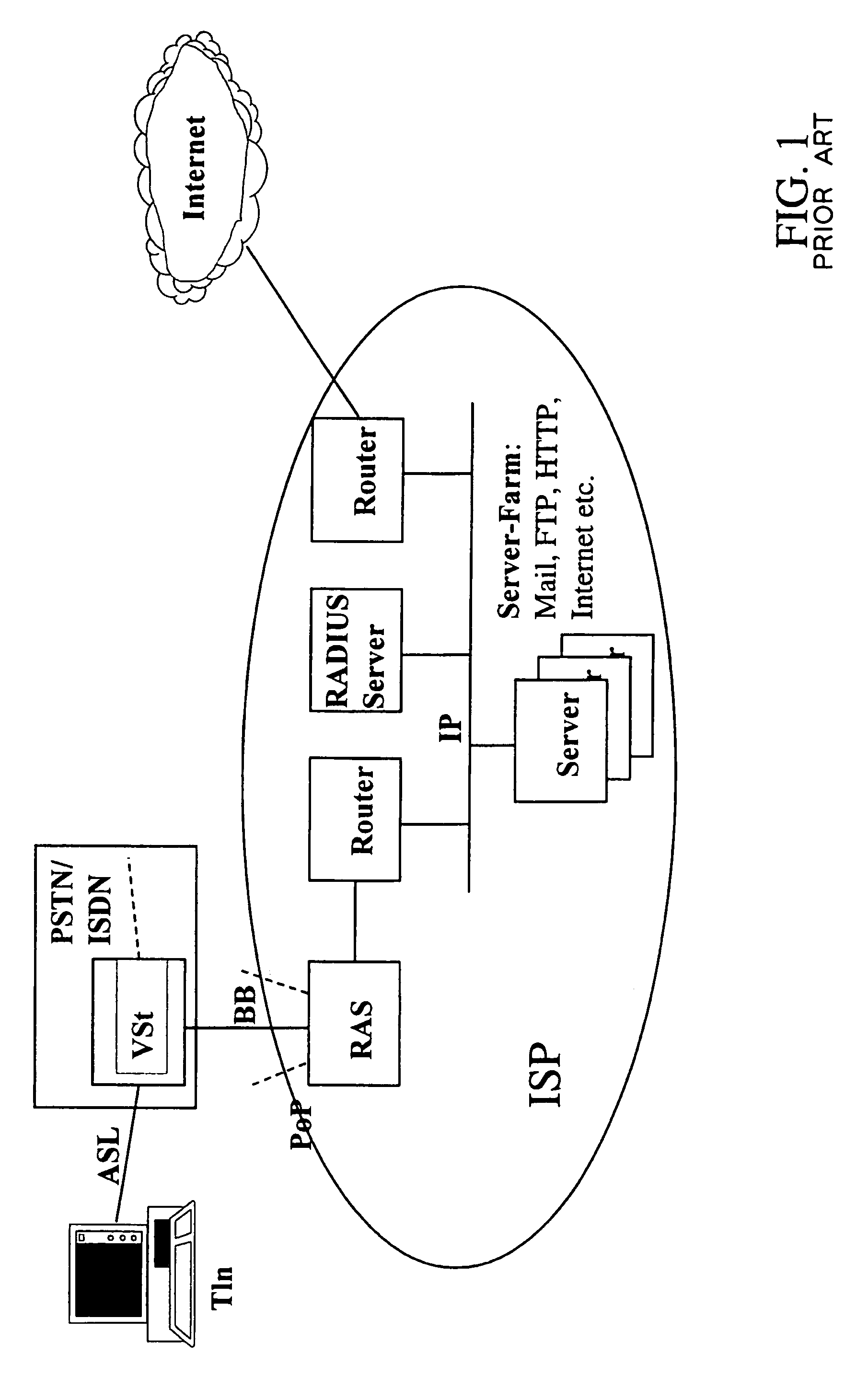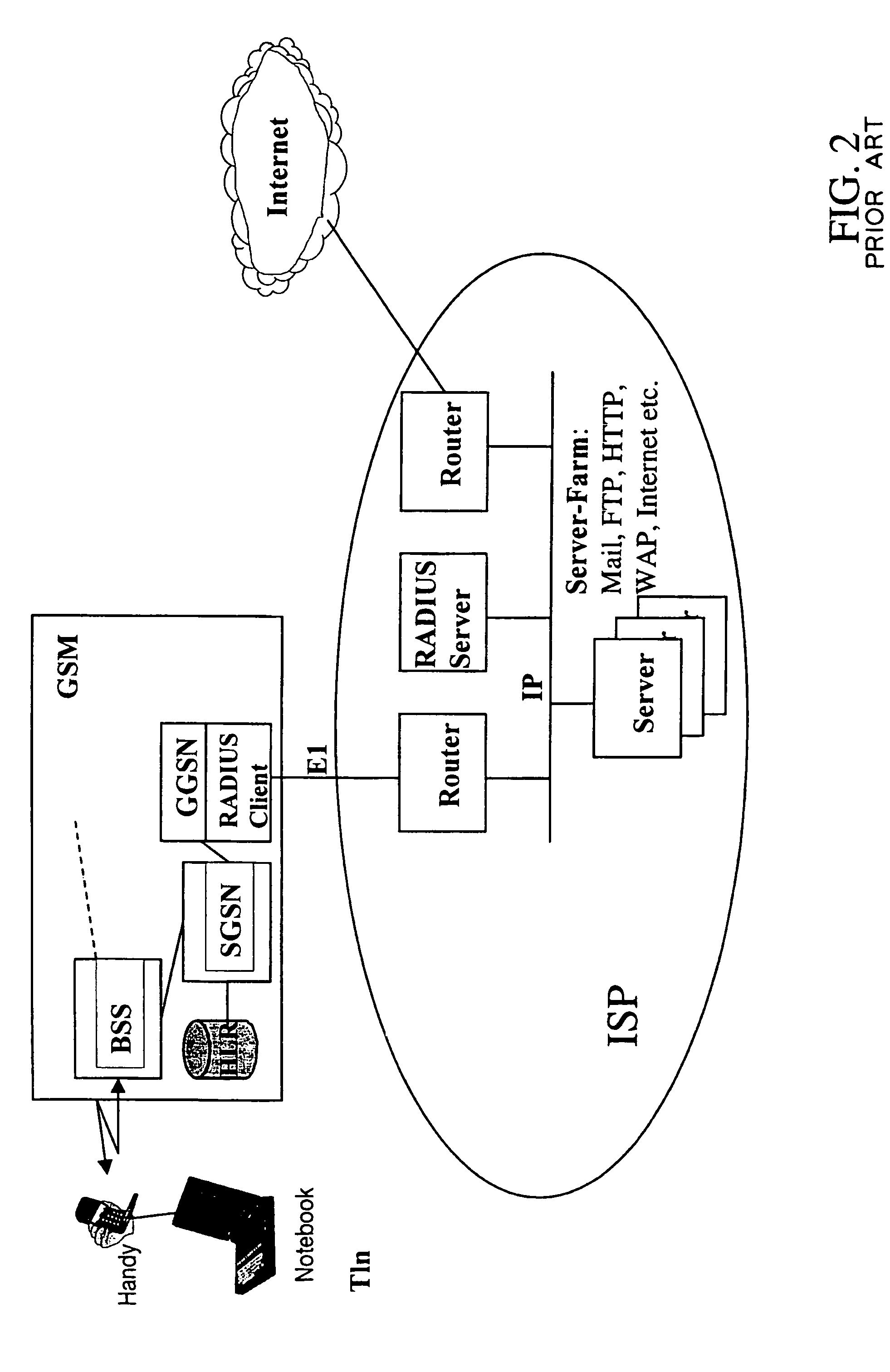Method and arrangement for the improved exploitation of technical resources between telecommunications networks and IP-networks
a technology of telecommunications networks and networks, applied in the direction of data switching, electrical equipment, transmission, etc., can solve the problems of high cost of broadband connection, unused transmission capacity, and high cost of process
- Summary
- Abstract
- Description
- Claims
- Application Information
AI Technical Summary
Benefits of technology
Problems solved by technology
Method used
Image
Examples
Embodiment Construction
[0030]FIG. 2 shows the typical ISP access to the GSM network via the GPRS service. The GPRS service is a packet-oriented transmission mode in the cellular GSM network. Here the GPRS traffic is decoupled in the base station subsystem (BSS) and is forwarded to the Serving GPRS Support Node (SGSN). The SGSN is responsible for the mobility management of the terminals, authentication, encoding, data compression and error correction at the air interface. In particular, the SGSN is connected to the home location register (HLR) of the GSM network (user data bank). The SGSN is connected to the Gateway GPRS Support Node GGSN. This establishes the connection to external IP networks, terminates the network-internal packet connection to the user, translates the addresses (Network Address Translation, NAT, see IETF RFC 1631), if needed, and offers furthermore functions, such as safe tunneling through external networks etc. An essential set of tasks within GPRS is also the authentication of the us...
PUM
 Login to View More
Login to View More Abstract
Description
Claims
Application Information
 Login to View More
Login to View More - R&D
- Intellectual Property
- Life Sciences
- Materials
- Tech Scout
- Unparalleled Data Quality
- Higher Quality Content
- 60% Fewer Hallucinations
Browse by: Latest US Patents, China's latest patents, Technical Efficacy Thesaurus, Application Domain, Technology Topic, Popular Technical Reports.
© 2025 PatSnap. All rights reserved.Legal|Privacy policy|Modern Slavery Act Transparency Statement|Sitemap|About US| Contact US: help@patsnap.com



